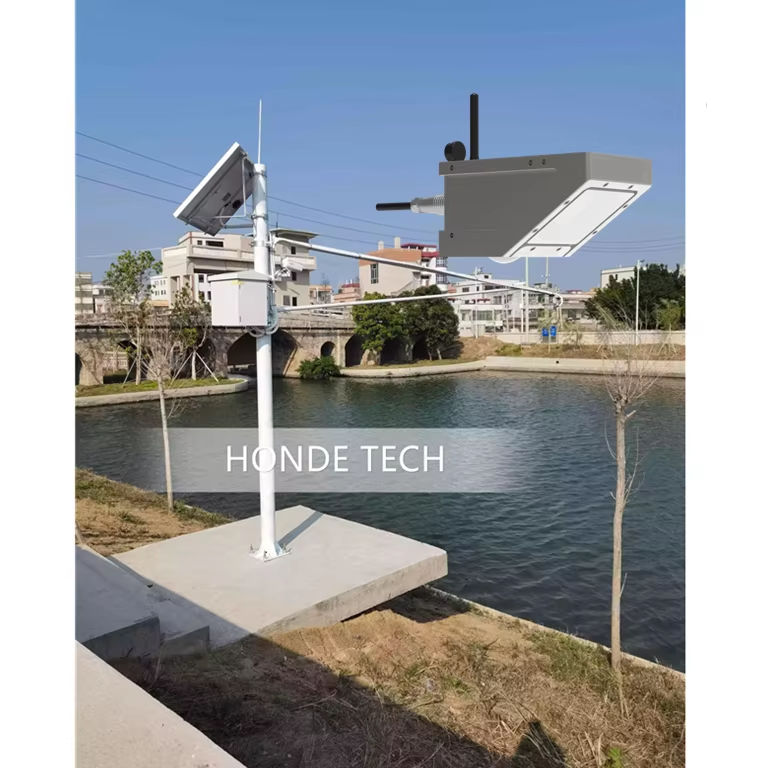In recent years, Cambodia has experienced significant urbanization, leading to an increasing demand for effective water resource management and monitoring systems. One of the most promising technologies in this domain is the hydrographic radar flowmeter. These devices, which utilize radar technology to measure water flow in rivers, canals, and drainage systems, have the potential to transform how Cambodian cities manage their water resources. This article explores the impact of hydrographic radar flowmeters on urban planning, flood management, environmental protection, and public health in Cambodian cities.
Understanding Hydrographic Radar Flowmeters
Hydrographic radar flowmeters operate by transmitting radar waves that reflect off the surface of the water, allowing for accurate measurements of flow velocity and water level. Unlike traditional flow measurement tools, these devices can operate effectively in various conditions, including turbulent flows, debris-laden waters, and adverse weather conditions. Their ability to provide real-time data makes them particularly valuable in dynamic environments such as urban waterways.
Enhancing Urban Water Management
-
Accurate Flow Measurement:
Hydrographic radar flowmeters deliver precise measurements of water flow rates in rivers and drainage systems. For Cambodian cities like Phnom Penh and Siem Reap, which are prone to seasonal flooding, having accurate flow measurement is essential for effective water resource management. These sensors allow authorities to monitor water levels and flow rates in real-time, leading to more informed decision-making regarding flood control measures. -
Improved Flood Prediction and Management:
Flooding is a frequent challenge in many Cambodian cities, especially during the monsoon season. By using hydrographic radar flowmeters, city planners and disaster management teams can better predict flood risks and implement timely evacuations or infrastructure reinforcements. These devices can create flood models based on real-time data, enabling cities to develop more effective flood response strategies, thus minimizing economic losses and protecting lives.
Supporting Environmental Sustainability
-
Monitoring Water Quality:
Hydrographic radar flowmeters can also play a role in environmental conservation by being integrated with water quality sensors. This combination allows for extensive monitoring of river and canal health, tracking pollutants and changes in water quality over time. Cities like Battambang and Banteay Meanchey, relying on local water sources for agriculture and drinking water, can use this data to take necessary actions to protect their ecosystems and public health. -
Promoting Sustainable Urban Development:
Integrating hydrographic radar flowmeters into urban planning can foster sustainable development practices. Understanding the hydraulic behavior of urban waterways enables city planners to design green spaces, permeable pavements, and sustainable drainage systems. These features help mitigate runoff, prevent flooding, and improve overall urban resilience.
Enhancing Public Health and Safety
-
Protecting Communities from Waterborne Diseases:
By ensuring that water quality is monitored effectively with hydrographic radar flowmeters and associated sensors, communities can be alerted to potential health risks associated with contaminated water bodies. Timely data can prevent outbreaks of waterborne diseases in urban areas, which is paramount for safeguarding public health. -
Increasing Public Awareness:
The availability of real-time data from hydrographic radar flowmeters can be used to inform and educate citizens about water management and environmental challenges. By increasing public awareness, communities can better engage in water conservation efforts and understand the importance of protecting their local water resources.
Conclusion
In conclusion, the introduction of hydrographic radar flowmeters represents a significant advancement in water management technology for Cambodian cities. By enhancing flood prediction capabilities, supporting environmental sustainability, and protecting public health, these devices can help local governments better navigate the challenges posed by rapid urbanization and climate change. As Cambodia continues to develop, adopting innovative technologies like hydrographic radar flowmeters will be crucial to ensuring sustainable and resilient urban environments for future generations. With proper implementation, these systems could pave the way for smarter cities that prioritize both their infrastructure and the well-being of their inhabitants.
For more Water radar sensor information,
please contact Honde Technology Co., LTD.
Email: info@hondetech.com
Company website: www.hondetechco.com
Post time: Feb-12-2025

